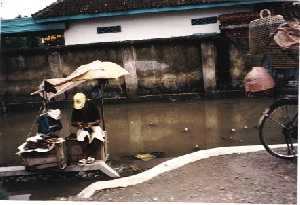 |
In my attempts to observe the causes and structures
of my actions and draw conclusions for future processes, I ask
questions on the origins of creativity caught between the two poles
of perfectionism and improvisation.

Stimulated by Roman Herzog's thesis that politics has degenerated
into a repair shop for the consequences of globalization, my
intention is to counter this ragged patchwork with the creative
labor of a universalist. In apparently chaotic self-organization,
creative artists change existing material with specific
interventions, adding new functions to it or giving it a new
statement. Creativity becomes planned but spontaneous activity
located somewhere between attachment and freedom. The ease of
defying normative rules of artistic production can be compared to
what Claude Lévi-Strauss calls "bricolage" - tinkering using
no traditional routines. All types of creative humans participate
in "bricolage" - artists, putterers, repairmen and women, in slums
and in lofts. Repairing things becomes a creative process inspired
by the condition in which the flawed object is found. "Defects" -
stripped of their negativity - trigger creative energy. |
 |
 |
 |
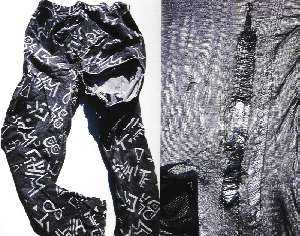
But we also see improvisation with new technological goods even in
cultures with professional repair systems. In new professions,
"selfmade men" and "do-it-yourselfers" are successfully interacting
with material things out of economic necessity. In an ever more
complex world, there are two types of people: those who throw
things away and those who repair them. |
The conventional meaning of "repair" is to mend or
restore. The premise for this is cultural knowledge on construction
and functionality combined with technical skill. In vast parts of
the world, there is no chartered vocational training for becoming a
craftsperson, artisan, or workman. Such a person must rely solely
on his own personal intuition and talent for improvisation.
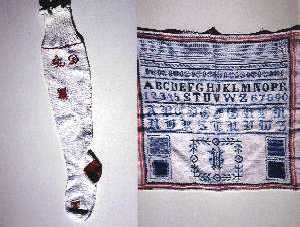 |
|
|
 |
 |
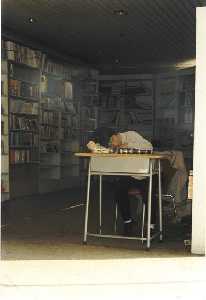 There
are many - often contradictory - reasons for belonging to one
of these groups. In the Third World, it is primarily the middle and
upper classes who throw things away; they differentiate themselves
from the lower classes - who must repair things due to economic
hardship - by extravagant consumption. In contrast, this sort of
class-related behavior is not evident in western industrialized
nations. The blissful feeling of making something whole again -
regardless of efficiency or time needed - is often found in private
circles. The processing of repairing something can be a flight or
retreat into detail as well as a creative act of discovery and
outlook. Just as fascinating is any type of visionary act which
makes its mark without getting lost in details - despite all
hardships. No patchwork; inventing things from scratch; thinking in
the future. As a fine artist, I am caught in the middle: I repair
tools, change architectural spaces with few materials, give objects
new meaning using a symbiosis of operation, repair, modelling, and
mounting. Repairing "defects" gives birth to a creative act which
brings about change and institutes new solutions. There
are many - often contradictory - reasons for belonging to one
of these groups. In the Third World, it is primarily the middle and
upper classes who throw things away; they differentiate themselves
from the lower classes - who must repair things due to economic
hardship - by extravagant consumption. In contrast, this sort of
class-related behavior is not evident in western industrialized
nations. The blissful feeling of making something whole again -
regardless of efficiency or time needed - is often found in private
circles. The processing of repairing something can be a flight or
retreat into detail as well as a creative act of discovery and
outlook. Just as fascinating is any type of visionary act which
makes its mark without getting lost in details - despite all
hardships. No patchwork; inventing things from scratch; thinking in
the future. As a fine artist, I am caught in the middle: I repair
tools, change architectural spaces with few materials, give objects
new meaning using a symbiosis of operation, repair, modelling, and
mounting. Repairing "defects" gives birth to a creative act which
brings about change and institutes new solutions.
|
 |
 |
 |
 |
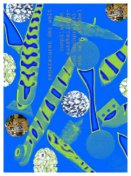

 There
are many - often contradictory - reasons for belonging to one
of these groups. In the Third World, it is primarily the middle and
upper classes who throw things away; they differentiate themselves
from the lower classes - who must repair things due to economic
hardship - by extravagant consumption. In contrast, this sort of
class-related behavior is not evident in western industrialized
nations. The blissful feeling of making something whole again -
regardless of efficiency or time needed - is often found in private
circles. The processing of repairing something can be a flight or
retreat into detail as well as a creative act of discovery and
outlook. Just as fascinating is any type of visionary act which
makes its mark without getting lost in details - despite all
hardships. No patchwork; inventing things from scratch; thinking in
the future. As a fine artist, I am caught in the middle: I repair
tools, change architectural spaces with few materials, give objects
new meaning using a symbiosis of operation, repair, modelling, and
mounting. Repairing "defects" gives birth to a creative act which
brings about change and institutes new solutions.
There
are many - often contradictory - reasons for belonging to one
of these groups. In the Third World, it is primarily the middle and
upper classes who throw things away; they differentiate themselves
from the lower classes - who must repair things due to economic
hardship - by extravagant consumption. In contrast, this sort of
class-related behavior is not evident in western industrialized
nations. The blissful feeling of making something whole again -
regardless of efficiency or time needed - is often found in private
circles. The processing of repairing something can be a flight or
retreat into detail as well as a creative act of discovery and
outlook. Just as fascinating is any type of visionary act which
makes its mark without getting lost in details - despite all
hardships. No patchwork; inventing things from scratch; thinking in
the future. As a fine artist, I am caught in the middle: I repair
tools, change architectural spaces with few materials, give objects
new meaning using a symbiosis of operation, repair, modelling, and
mounting. Repairing "defects" gives birth to a creative act which
brings about change and institutes new solutions.

